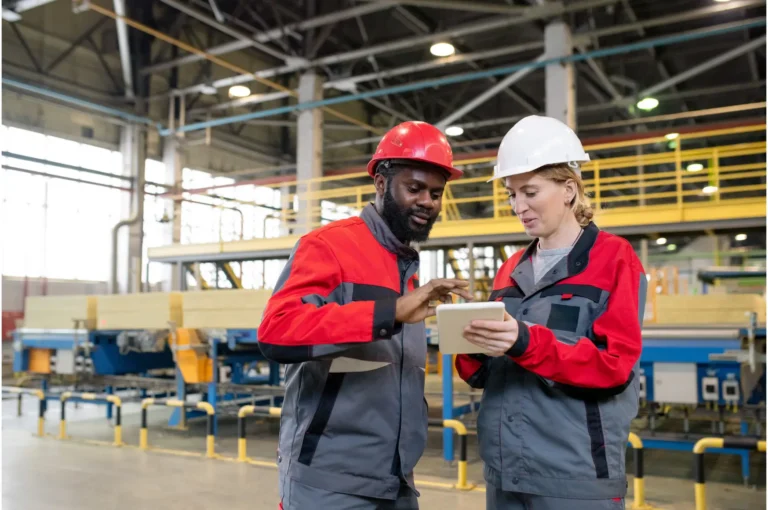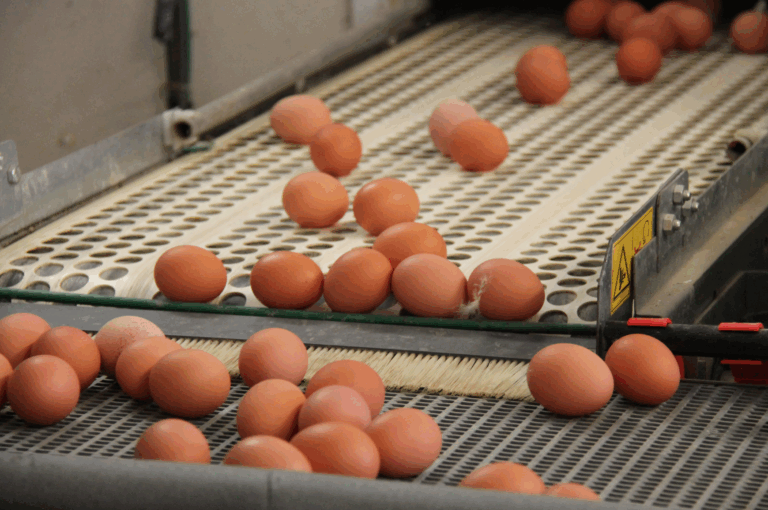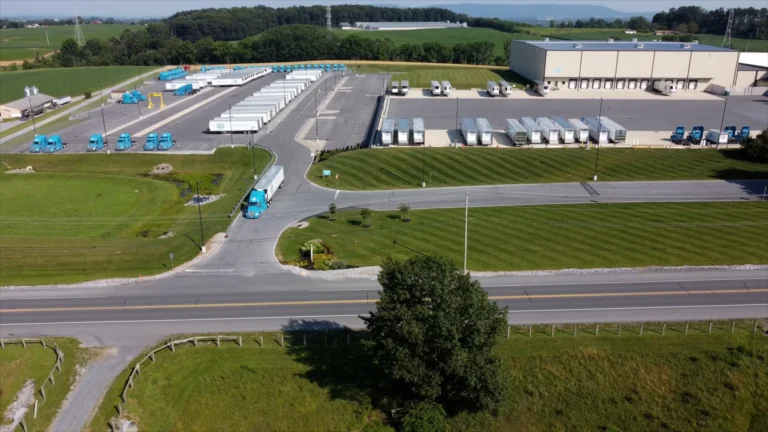Artificial intelligence (AI) has evolved from being a distant concept to becoming a revolutionary force that can transform manufacturing operations. The manufacturing industry has experienced rapid change because AI-powered technologies now provide better productivity, waste reduction, quality, and flexibility.
This article examines how AI is transforming contemporary manufacturing through the optimization of supply chains, robotics, quality control, and predictive maintenance. It also explores the benefits, challenges, and potential future developments of manufacturing operations, which intelligent automation systems significantly impact.
From Automation to Autonomy: A New Era Begins
Traditional manufacturing has long relied on automation to streamline repetitive tasks. Conveyor belts, CNC machines, and industrial robots have improved productivity over the decades. But AI takes things a step further. Unlike conventional automation, which follows rigid, preprogrammed rules, AI systems can learn from data, adapt to changing conditions, and make decisions with minimal human input.
This shift from rule-based automation to data-driven autonomy is at the heart of what’s often referred to as Industry 4.0—the fourth industrial revolution. In this environment, machines not only work but also think, learn, and improve over time.
Key Applications of AI in Manufacturing
Integrating artificial intelligence into manufacturing operations offers a wide range of benefits that enhance efficiency, improve product quality, and drive long-term cost savings across the production lifecycle.
1. Predictive Maintenance
Thanks to AI, predictive maintenance helps manufacturers detect impending equipment failures. They do this by recognizing patterns in sensor data, including increased vibration, temperature changes, and acoustic signals. This feature lets manufacturers fix issues before they cause expensive repairs or unplanned production bottlenecks.
Predictive maintenance outperforms traditional preventive maintenance because it cuts down on unneeded servicing and decreases equipment breakdown risks. It can yield cost savings of between 8% and 12% compared to preventive maintenance and up to 40% compared to reactive maintenance.
2. AI-Powered Quality Control
Quality control benefits from AI-enabled computer vision systems that detect product defects with higher precision and speed than human vision. Real-time assessment of high-resolution camera images through machine learning algorithms enables the detection of small specification deviations in parts and assemblies.
The high precision of this system minimizes waste and rework, particularly in industries with tight tolerances, such as electronics, automotive, and aerospace. Machine learning models develop their capabilities through continuous improvement, leading to smarter quality assurance systems over time.
3. Smart Robotics and Cobots
The implementation of AI technology resulted in the creation of smart robots and collaborative robots (cobots) that now serve as standard equipment on factory floors. The main difference between traditional robots and cobots lies in their ability to work alongside humans in the same area while learning new tasks through minimal programming.
The robots employ AI processing of visual and auditory data as they navigate changing environments to perform complex or delicate operations. The technology enables manufacturers to adopt new production techniques for customized and small-batch manufacturing, which previously required extensive human labor.
4. Process Optimization
AI algorithms optimize manufacturing processes in real time. The systems track production data from machines and workstations to recommend modifications, which decrease energy usage, boost production rates, and optimize material usage. AI systems modify CNC machine tool parameters, including speed, feed rate, and depth of cut, to preserve part quality during changes in material properties and ambient conditions.
5. Management of the Supply Chain
AI’s effects on supply chain logistics benefit the manufacturing ecosystem. Manufacturers can enhance their inventory management and shipping routes by utilizing intelligent forecasting tools to predict demand more accurately.
AI platforms use data analysis to spot supply chain interruptions like supplier delays and geopolitical threats and then offer suggestions to reduce risks. In the current unstable global environment, the ability to quickly adapt becomes even more crucial.
Benefits of AI Integration in Manufacturing
As AI technologies become more deeply embedded in factory operations, manufacturers are beginning to realize a host of tangible benefits that go beyond automation—transforming how products are made, monitored, and delivered.
1. An Increase in Efficiency and Productivity
AI can automate complex decision-making processes that result in better resource allocation and faster production cycles. By scheduling tasks on a production line or balancing energy loads, artificial intelligence helps manufacturers accomplish more work in less time.
2. Better Product Quality
AI helps produce more reliable and defect-free products by improving quality control and lowering human error. Manufacturers can enhance adherence to industry standards and maintain tighter tolerances.
3. Lower Prices
AI offers major cost advantages, ranging from reduced maintenance costs to energy savings and improved workflows. These efficiencies add up over time, providing businesses a competitive advantage.
4. Greater Personalization and Adaptability
AI makes it easier for manufacturers to quickly switch between different product types or processes. Low-volume, high-mix production models that adjust to changing consumer demands are thus encouraged.
5. Using Data to Make Decisions
With AI, manufacturers can glean valuable insights from their data. Dashboards and analytics tools convert raw data into actionable intelligence, enabling better strategic decisions across operations.
Challenges and Considerations
AI integration in manufacturing faces several obstacles despite its potential advantages.
1. High Initial Investment
Deploying AI systems, which include complex robotics and specialized machine learning models, is very expensive. Small manufacturing firms struggle to justify their initial expenditures because they lack a clear return on investment.
2. Data Quality and Integrity
AI thrives on data. Many factories experience data fragmentation and poor data quality as a result of their isolated information. Integrating contemporary sensors with legacy equipment while maintaining steady data flow is a major technical challenge.
3. Workforce Disruption
Automation raises concerns about job displacement. The implementation of AI technology creates new positions in programming, data analysis, and robotics maintenance, but it also leads to the elimination of specific traditional roles. The workforce requires proper reskilling to facilitate a seamless transition between old and new systems.
4. Cybersecurity Risks
Increased connectivity in smart factories introduces more attack surfaces. Protecting intellectual property and operational data from cyber threats becomes critical as AI adoption grows.
The Future of AI in Manufacturing
Thanks to technologies like digital twins, which are virtual representations of physical systems, manufacturers will be able to model and optimize processes before implementing the changes in the real world.
Meanwhile, advances in generative AI could enable machines to design parts, fixtures, or even entire production lines autonomously based on design constraints and performance goals.
The increasing demand for sustainable manufacturing will make AI essential for monitoring emissions, optimizing energy consumption, and implementing circular economy principles.
Conclusion
Artificial intelligence transforms manufacturing operations. It enables manufacturers to achieve flexibility and effectiveness, along with market competitiveness, through its various applications that include supply chain resilience, robotic collaboration, and predictive maintenance. The implementation of this change presents several challenges, including workforce disruption, data integration, and investment costs.
Businesses must implement AI strategically by investing in people, procedures, and long-term change management in addition to technology. The industry’s future development will empower manufacturers rather than replace them, and those who implement intelligent automation today will become leaders in the smart factories of tomorrow.






